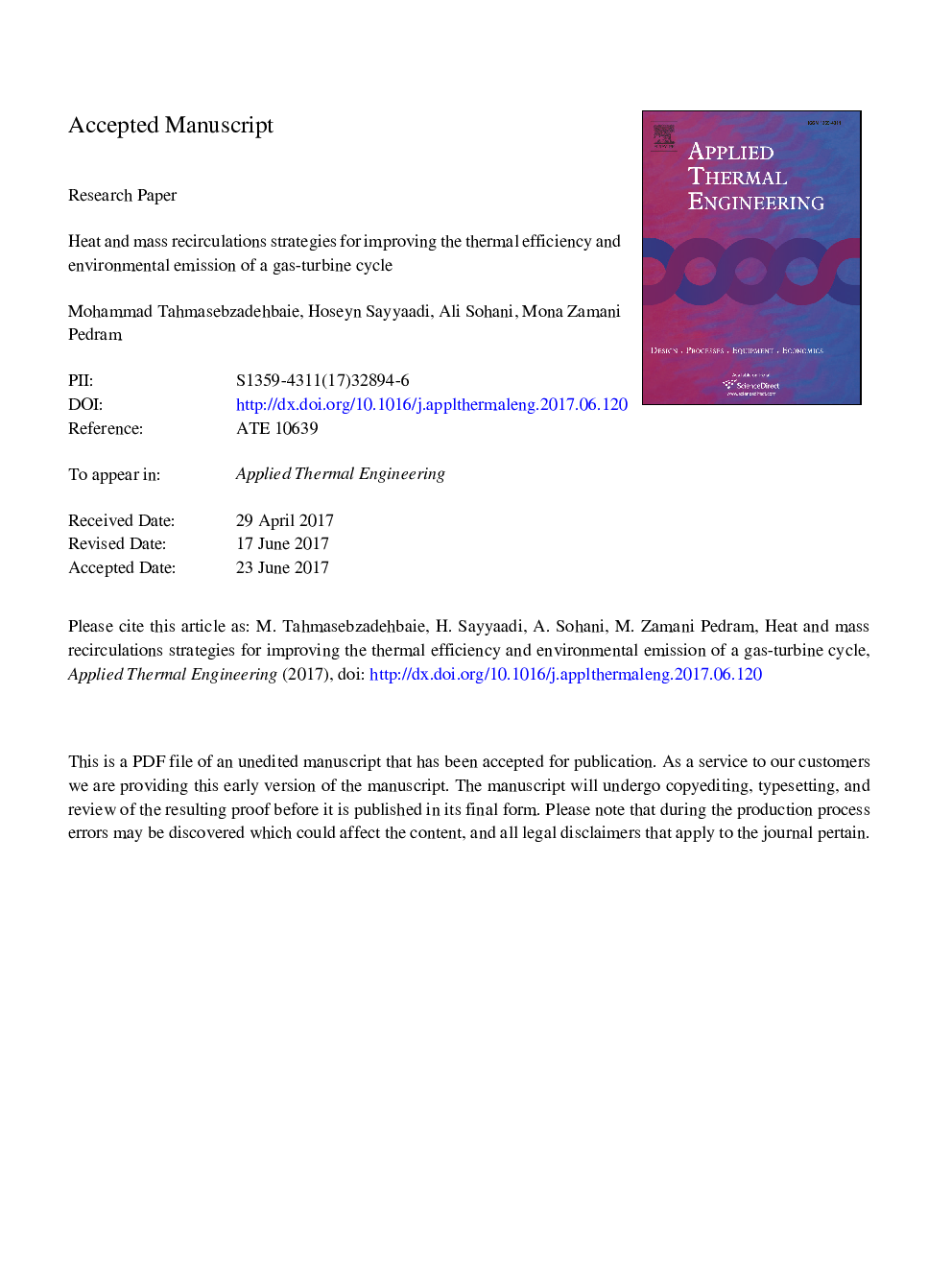| Article ID | Journal | Published Year | Pages | File Type |
|---|---|---|---|---|
| 4991172 | Applied Thermal Engineering | 2017 | 58 Pages |
Abstract
Thermal efficiency and emission of a gas-turbine cycle were improved through consideration of heat and mass recirculations. In this regard, three potential scenarios were investigated: using lone mass circulation, only heat recirculation, and both types of recirculation at the same time. In each scenario, the maximum potential improvement was found by multi-objective optimization. Furthermore, in the case of only heat circulation scenario, the best heat recirculator was chosen by comparing a tubular with a plate-fin heat exchanger (PFHE) a well-known decision-making method which is called analytical hierarchy process (AHP). Finally, AHP method was employed again to select the superior scenario for improving the gas cycle. According to the results, the best scenario was the scenario in which heat recirculation with PFHE was used in the absence of mass recirculation. In this scenario, thermal efficiency and NOx emission were improved 4.20 and 17.94%, respectively. The payback time of the investment of the modification was also about 62Â days. Moreover, due to the shortage of power in the case of mass recirculation, this scenario was found to be desirable when there is extra capacity in power generation, and the goal is reducing emissions as much as possible.
Related Topics
Physical Sciences and Engineering
Chemical Engineering
Fluid Flow and Transfer Processes
Authors
Mohammad Tahmasebzadehbaie, Hoseyn Sayyaadi, Ali Sohani, Mona Zamani Pedram,
